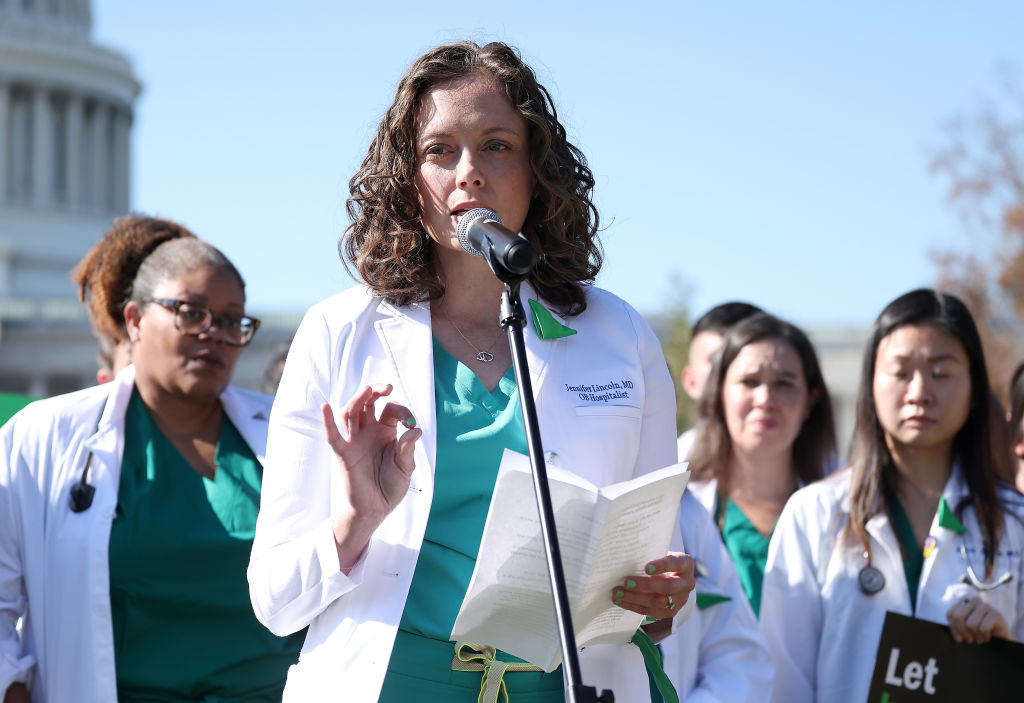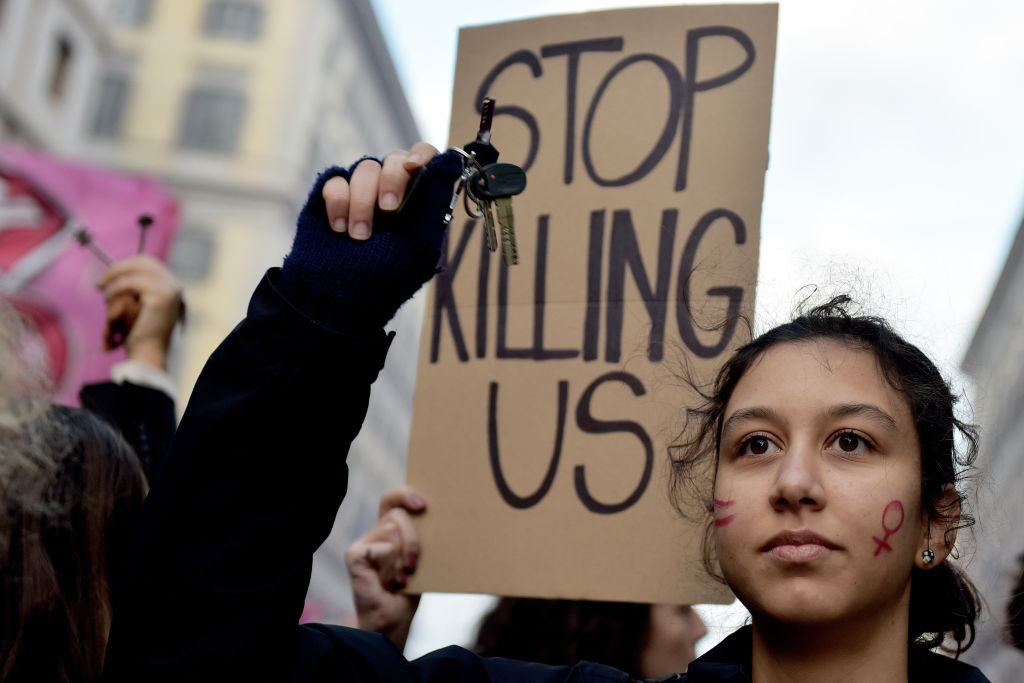We cannot lose sight of this simple truth: Abortion bans are extreme and harmful because they ban abortion, period.

If you’re following the debate around the total bans on abortion in place in states across the country, you might think what makes them extreme and harmful is whether they have certain exceptions, like those for people experiencing life-threatening pregnancy complications. Harrowing stories about people in these circumstances in Texas, Louisiana and more continue to generate huge media attention because they so clearly expose the depravity of anti-abortion policies.
But this overwhelming focus on whether bans have exceptions and whether people can get abortions in extreme situations distorts our perception of what is actually happening in states that ban abortion—which is that abortion bans are extreme and harmful because they ban abortion, period.
Losing sight of that simple truth means ignoring and even inadvertently stigmatizing most people who want and need abortions. As the focus shifts to the 2023 state legislative sessions, where we expect lawmakers in states like South Carolina and Ohio to further restrict abortion care, correcting public narratives about abortion bans is an urgent priority. To do that, we need to reframe how we discuss exceptions in three critical ways:
Exceptions are designed to be unworkable.
Anti-abortion policymakers see exceptions as loopholes and designed them to be difficult, if not outright impossible, to use even for the few who qualify under their narrow limits. Rather, exceptions function mainly as PR tools to make abortion bans seem less cruel than they are and distract from the inhumanity of the ban itself.
Every abortion ban currently being enforced has an exception for the life of the pregnant person, and some have exceptions in cases of severe health conditions. However, providers across the country have warned that these exceptions use vague, non-medical language, which is extremely difficult to follow and apply. Combined with the substantial legal risk to providers from misinterpreting a legal exception—including large fines, imprisonment and loss of a license—this means important health decisions are being made by lawyers, not medical professionals. As a result, pregnant people suffer because their medical condition must deteriorate to the point at which the exception is met, and the provider can avoid criminal liability.

Rape and incest exceptions are less common and present their own barriers, making abortion difficult, if not impossible to access. In order to qualify, patients often must jump through a series of hoops—including reporting the assault to law enforcement, which evidence shows many survivors don’t do.
For many, this hurdle may be insurmountable, because it is traumatizing, because they distrust law enforcement or because it puts them at risk of retaliation from their perpetrator.
Conversely, laws that do not require a police report have their own pitfalls, placing providers in a difficult position of having to potentially prove the assault to meet the requirements of the exception.
Focusing on exceptions ignores the vast majority of people harmed by abortion bans.
Even with Roe still in place, there were huge inequities in who was able to get an abortion— and the current situation is worsening dramatically, as more than a dozen states have already banned abortion outright.
Data shows about 75 percent of abortion patients are low-income, in their 20s and are already parents. Black and Brown people make up a disproportionate share of abortion patients, due to higher rates of unintended pregnancy that reflect pervasive health disparities rooted in a long history of racism.
These groups have the fewest resources to overcome the enormous logistical and financial barriers that abortion bans create. And just before Roe was overturned, Guttmacher research showed that the need for abortion care was rising, with 930,000 abortions being obtained in the United States in 2020, an 8 percent jump from 2017.
The harm abortion bans are causing every single day is enormous, and the focus on exceptions distracts from the pain and damage abortion bans inflict on predominantly marginalized communities.
The focus on exceptions creates a false hierarchy of who is deserving of care.
Stories that center people whom exceptions support (if only on paper) resonate because they expose the abject cruelty of anti-abortion policymakers. But this focus also fuels the perception that people in some circumstances are more deserving of an abortion than others.
Inadvertently ranking the validity of people’s reasons for seeking abortion care challenges their agency and right to bodily autonomy. In the long term, this feeds into the anti-abortion movement’s false and dangerous narrative that seeks to delegitimize the reasons people have abortions—with the ultimate goal of outlawing abortion for anyone, anywhere and for any reason.
Even though exceptions don’t work in practice, people in those circumstances, and anyone who needs an abortion, should have the right to compassionate and accessible abortion care. But when we let exceptions dominate the narrative about abortion bans, we fail to recognize the true scale and depth of harm that abortion bans intentionally inflict.
In this post-Roe reality, recognizing that exceptions are not workable is just the first step. Understanding everyone’s equal right to reproductive health and autonomy is the foundation we need to build on.
In the end, deciding that they need an abortion is the only reason anyone should ever need to get one.
Up next:
U.S. democracy is at a dangerous inflection point—from the demise of abortion rights, to a lack of pay equity and parental leave, to skyrocketing maternal mortality, and attacks on trans health. Left unchecked, these crises will lead to wider gaps in political participation and representation. For 50 years, Ms. has been forging feminist journalism—reporting, rebelling and truth-telling from the front-lines, championing the Equal Rights Amendment, and centering the stories of those most impacted. With all that’s at stake for equality, we are redoubling our commitment for the next 50 years. In turn, we need your help, Support Ms. today with a donation—any amount that is meaningful to you. For as little as $5 each month, you’ll receive the print magazine along with our e-newsletters, action alerts, and invitations to Ms. Studios events and podcasts. We are grateful for your loyalty and ferocity.





